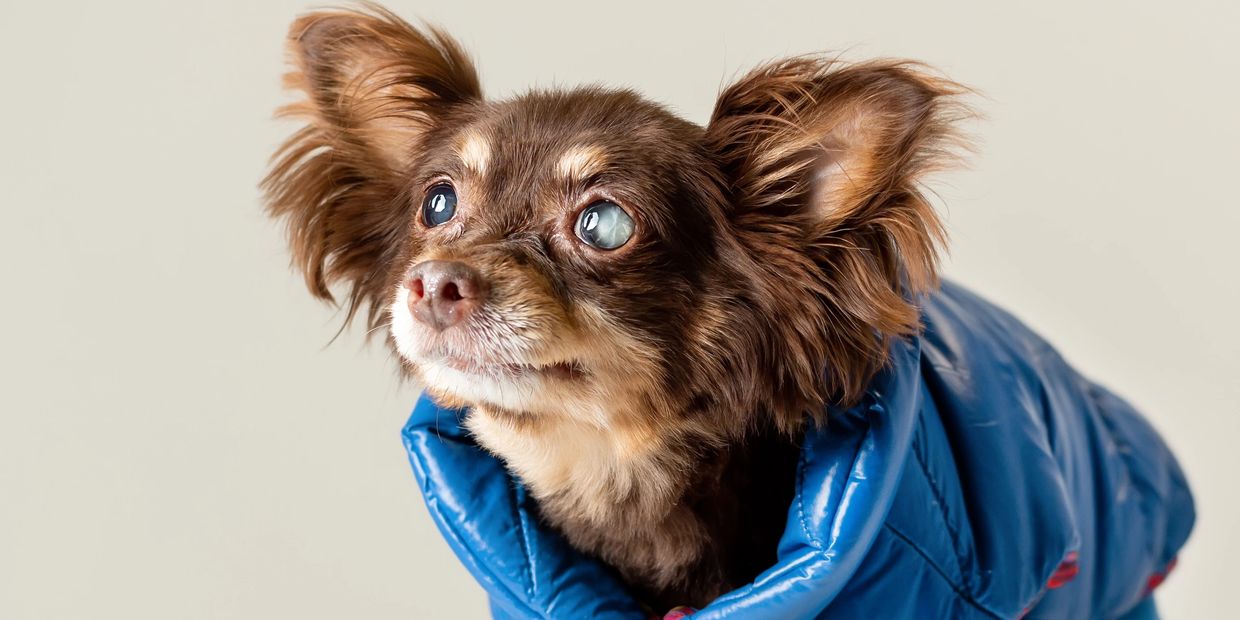What counts as “vision care” for pets
Vision care covers all aspects of eye health: from routine screening,
through the detection of early disease, to surgical or medical treatment of serious conditions.
Some of the services involved:
Comprehensive eye exams (including vision testing, pressure measurement, tear flow, etc.).
Diagnostic imaging of the eye (ultrasound, CT/MRI if needed) for more complex cases.
Treatment of common issues like corneal ulcers, cataracts, glaucoma, eyelid disorders, dry-eye.
Surgical interventions (e.g., cataract removal, eyelid repair, grafting).
Referral or specialty care by a board-certified veterinary ophthalmologist (Diplomate of American College of Veterinary Ophthalmologists).
Why it’s important
Pets can’t tell us when their vision is failing. Early signs might be subtle: bumping into objects, slower to respond in low light, reluctance to climb stairs, etc.
Some eye conditions are painful (e.g., glaucoma, corneal ulcers) and, if untreated, can lead to permanent blindness or even loss of the eye.
Vision issues can affect mobility, confidence, quality of life, and safety (especially for pets that are active, older, or live in complex environments).
Early detection means more treatment options, better outcomes, less cost in the long run.
What to watch for (signs of eye problems)
Here are warning signs that you should have your pet’s eyes checked:
Cloudy, hazy or bluish appearance of the eye(s)
Redness, obvious irritation, or persistent discharge
Squinting, rubbing at the eye, pawing at face/eye region
Bulging eyeball, one eye looking different size than the other
Sudden change in vision: bumping into things, hesitation on stairs, slower reaction
Dark spots in the eye, new growths/lumps near the eye or eyelid
Excess tearing or dry-looking eyes
Behavior change (less play, more cautious)
How to keep your pet’s vision healthy (prevention & care)
Include eye health in your pet’s routine wellness checkups. Mention specifically you’d like eye screening.
Keep the area around their eyes clean: clear away debris, check for foreign objects especially if outdoors a lot.
Manage risk factors: Breeds predisposed to certain eye conditions should get regular screening.
For example, some dog breeds have genetics that predispose them to cataracts or glaucoma.
Avoid trauma: If your pet is in rough play, outdoors with risks (e.g., branches, sticks), watch for eye injuries.
Ensure good nutrition and overall health: Some systemic illnesses (diabetes, high blood pressure) also affect the eyes.
Older pets: As pets age, risk of cataracts, retinal disease, and glaucoma rises — schedule more frequent eye checks.
If you notice any of the warning signs above — get them checked immediately, rather than waiting for the next scheduled visit.
When to see a specialist and how to choose one
If your regular veterinarian identifies an eye issue, or you observe concerning signs,
you may be referred to or choose a veterinary ophthalmologist (eye specialist).
What to look for in a specialist practice:
They are board-certified (Diplomate of ACVO) which means advanced training in veterinary ophthalmology.
They have specialized equipment for eye diagnosis and surgery (slit lamp, tonometry, imaging).
They handle both medical and surgical treatments, including emergencies and follow-up care.
They communicate clearly about the treatment plan, costs, risks, expected outcomes, and post-care at home.
If your pet needs surgery: the practice should provide detailed post-operative care instructions (eye drops, collars, activity restrictions) for best outcomes.
